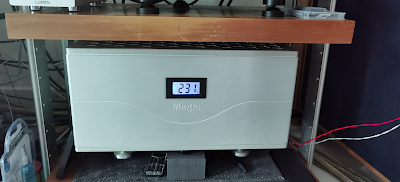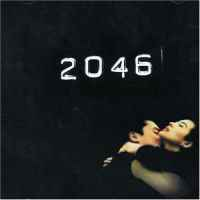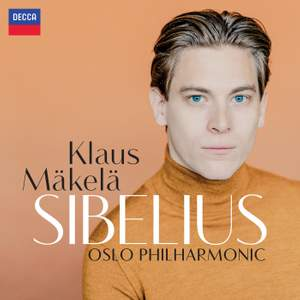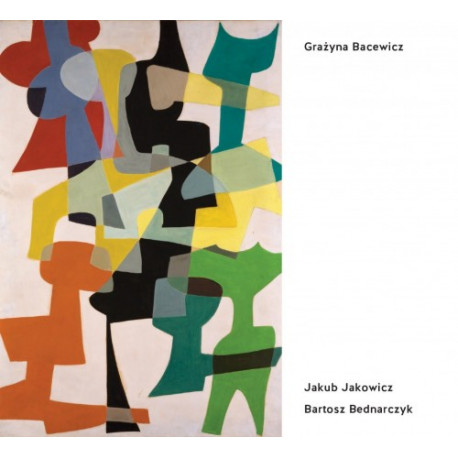Click pics to enlarge.
Streaming Classical (22-7): Faure Chamber Music and Brad Mehldau
Basic Repertoire (22-2): Faure Piano Quartets and Quintets
Gabriel Faure is one of the most enigmatic composer there is. Even most seasoned classical listeners are challenged by his music. It’s tonal, increasingly chromatic as he aged, but many will often ask, among the constantly shifting vistas and textures, where’s the melody or development? Certainly I did, but as I grew older, many beautiful passages just enticed me. I’m not musically trained, but having listened to classical music for such a long time has amply trained me in listening vertically - while I cannot tell you what chords and harmony are at play, I can appreciate them.
Imagine my surprise when I streamed via NML a recent French Aparte release of Faure’s chamber music. Somehow the playing did not quite agree with me, but I was ecstatic when I read the liner note (unlike most streaming services, this is a sterling feature of NML), written by none other than prominent jazz pianist Brad Mehldau (I even used to have one of his early CDs). This really astonished me. Keith Jarrett playing Bach and Shostakovich, yes, but a jazz musician making a case for Faure? Such ephemeral and intransigent music appreciated by a jazz musician. Now I’m really curious and I’m going to stream some of Mehldau’s recent works later. First, though, some of my thoughts on Faure.
Faure is foremost a pianist. So, his piano works have received the Lion’s share of attention. Be that as it may, offhand can you name even one major pianist who has a Faure piece in his/her recital (likely a nocturne or bacarolle)? Blank! This is a niche. But there is good reason. Most Faure performances are bland. The demand for subtle articulation allied to outing of passion trip most musicians. Which is why Germaine Thyssens-Valentin’s Nocturnes (Testament) still reign supreme (and by a far margin). Another Faure issue that I really appreciate is truly a dark-horse, by the young Dutch pianist Minaar (Challenge), whom I avidly follow.
A Survey of the Piano Quartets and Quintets
Aside from his best known Violin Sonata No 1, for me I am most enamored of his Piano Quartets and Quintets. These are pinnacles of the chamber literature but far less known than those by Dvorak, Brahms and even Schumann.
The Piano Quartet is a notoriously difficult formation to record and balance, and hence the piano quintets of those aforementioned composers are much better known than their piano quartets. In the case of Faure, I rank his Piano Quartets with Brahms at the top. The Piano Quintets are late works that inhabit a less obviously romantic world. When it comes to chamber works, I usually find, no matter how good the intention, ad-hoc ensembles (even studded with stars) don’t usually match up to seasoned regular ensembles. So it is with Faure. In most of the cycles below, the same pianist will play the Piano Quartets with some colleagues, but will play with a String Quartet for the Piano Quintets. The results are clear - the Piano Quintets usually come off rather well, but results for the Piano Quartets are more mixed.
For the longest time, I had a hard time assimilating Faure, UNTIL I bought an LP by the Quintetto Faure di Roma (Claves) of the 2 Piano Quintets. That sounded so right, so refined (yet with fire, unlike those English performances touted by the press), that I became an instant convert. In fact, that album (though with Italian musicians, the estimable Pina Camirelli among them) remains a benchmark. I just streamed the Quartetto Faure di Roma’s Piano Quartets on the same label, and they are cut from the same cloth. I assume they are basically the same musicians. Now, they are not to be confused with the Quartetto di Roma (sans the word Faure) nor the short-lived Quatour Faure (on DG). Sample the very beautiful slow movements of these 2 Piano Quartets and you shall be hooked.
And so I was triggered into a Faure phase. I streamed and sampled many French performances of the 4 works with piano and strings. Does birth right confer an advantage? Maybe yes and no, but what is obvious is that everybody does it differently - contrary to myth, there is no uniform style, nor do some of the playing fit into the traditional view of Faure’s world as sepia and half-lit.
Erato, of course, has the largest number of accounts. The playing of Quatour Bernede has pleasing old-fashioned warmth and directness but I find the legendary Samson Francois somewhat brash (as he’s prone to be). Sonically this is surpassed by several later accounts on the same label. I very much like the older account with the excellent Jean Hubeau at the piano: the Piano Quartets’ musicians include the great cellist Andre Navarra, and his playing in the slow movements are just spellbinding; the Quintets are with the Via Nova Quartet. This is now one of my references, next to the Italians mentioned above. Then there is a very good chamber music set anchored around around the Capucon brothers, violist Gerard Causse and Quatour Ebene, where the piano duties are shared by the excellent Michel Dalberto (I became a fan after I heard him in HK; you should sample his big Erato box) and Nicholas Angelich (who is admired even by Argerich; his Brahms recordings you should investigate; it’s sad that he had recently passed at an early age). Despite the star studded cast, this is a good set and a good place to start to investigate Faure’s chamber works. And then there is the old set anchored around Jean-Phillips Collard, who is supposedly a Faure expert (recorded much solo piano for Erato and French EMI). No less a figure as Horowitz once consulted him on how to play Faure. Despite all this, I have never taken to Collard and the one time I heard him live in HK was dreadful (maybe he was sick?). In this set, the Quintets with the Parenin Quartet definitely sound more coherent to me than the Quartets.
Moving beyond Erato, veteran Pascal Roge and Ysaye Quartet (Decca) give very elegant performances that are reference grade, in excellent sound of course. Unlike other compilations, here the Quartets are played by members of the Ysaye, so the whole set has unusual coherence On the enterprising label Alpha there is a recent comprehensive set of Chamber Music with Piano, anchored around Eric Le Sage, but, despite stars (some also appear on some of the other accounts noted above) somehow I find it not quite congenial. The piano sound can verge on the monochromatic and harsh side. In the Quartets I find the playing of Daishin Kashimoto (concertmaster of the BPO) to be a bore, more like sight-reading; much better the Quintets with the Quatour Ebene.
Historic If you have no bias towards mono sound (in many ways it’s really quite decent, indeed preferable to some of the digitally recorded sound above), you must listen to the aforementioned Thyssens-Valentin in this repertoire (Edition Andre Charlin). The Quartet No.1 (no No. 2 in this set) serves as a model on how to play the music with impeccable style (the supporting players, all unknown to me, simply play with her as one breathing organism). The Quintets with the ORTF Quartet are just as great.
And now for Brad Mehldau's Notes on Faure (from Aparte Liner Notes)
Fauré – Catcher of dreams
Brad Mehldau
Any new recording of Fauré’s chamber music is always welcome. There are many more fresh insights for us to discover. On this recording, the depth of these musicians’ understanding, and the generous engagement with the deep emotion in the music is immediately apparent. As someone who has wrestled with Fauré’s Piano Nocturnes for years, it strikes me that the challenge is not to avoid being saccharine or overwrought, the way it might be with so called Romantic composers (how much utility does this term have for Fauré?). On the contrary: the challenge is to really go “all the way in” to the music, and not shy away from its singular, sometimes all-consuming vision. Fauré…the great underrated composer, the quiet giant. My discovery of him as a developing jazz musician was independent of Ravel and Debussy – two other French titans more commonly associated with jazz. On my path, he was a bridge between something more German – certainly Schumann and Brahms – and something as of yet unknown on the other side. His oeuvre is unquestionably “French” in character, yet also essentially unclassifiable. One could say that Fauré ends with Fauré, in the same way some speak of Brahms. I do not explicitly hear his influence in a continuing direct lineage, although I may be wrong about that. Yet: I hear his spirit in music outside the classical realm – in the saudade feeling of Antônio Carlos Jobim, in the nostalgic melancholy that embedded in many of Leo Ferré’s chansons, or in the wistful music of Michel Legrand, for example. I really believe that Fauré’s music is still of the future, in a way that other composers who straddled the nineteenth and twentieth centuries are not. His chamber music in particular, included here, is a stone as of yet only partially unturned. In any case, Fauré presents a bridge to much of the music I compose and improvise, music commonly called jazz. What has influenced me most is his harmonic palette, unlike any other: strange, enchanting, at times inexplicable, even confounding. You look at what’s on the page in some passages, and you say, “How did he get from point A to point B?”. Some will disagree, but for me, Fauré is essentially a harmonist, notwithstanding his melodic gift. We find this in his slow movements most strikingly: the long, languorous melodies, played in octaves by the strings, are more like canopies that stretch over and protect the fruit below.
July 2021
I also found a comment by Aaron Copland on Faure's famous piano work, Theme and Variations:
“...How many pianists, I wonder, have not regretted that the composer disdained the easy triumph of closing on the brilliant, dashing tenth variation. No, poor souls, they must turn the page and play that last, enigmatic (and most beautiful) one, which seems to leave the audience with so little desire to applaud...”



.png)
.png)
.png)
.png)
.png)
.png)



































